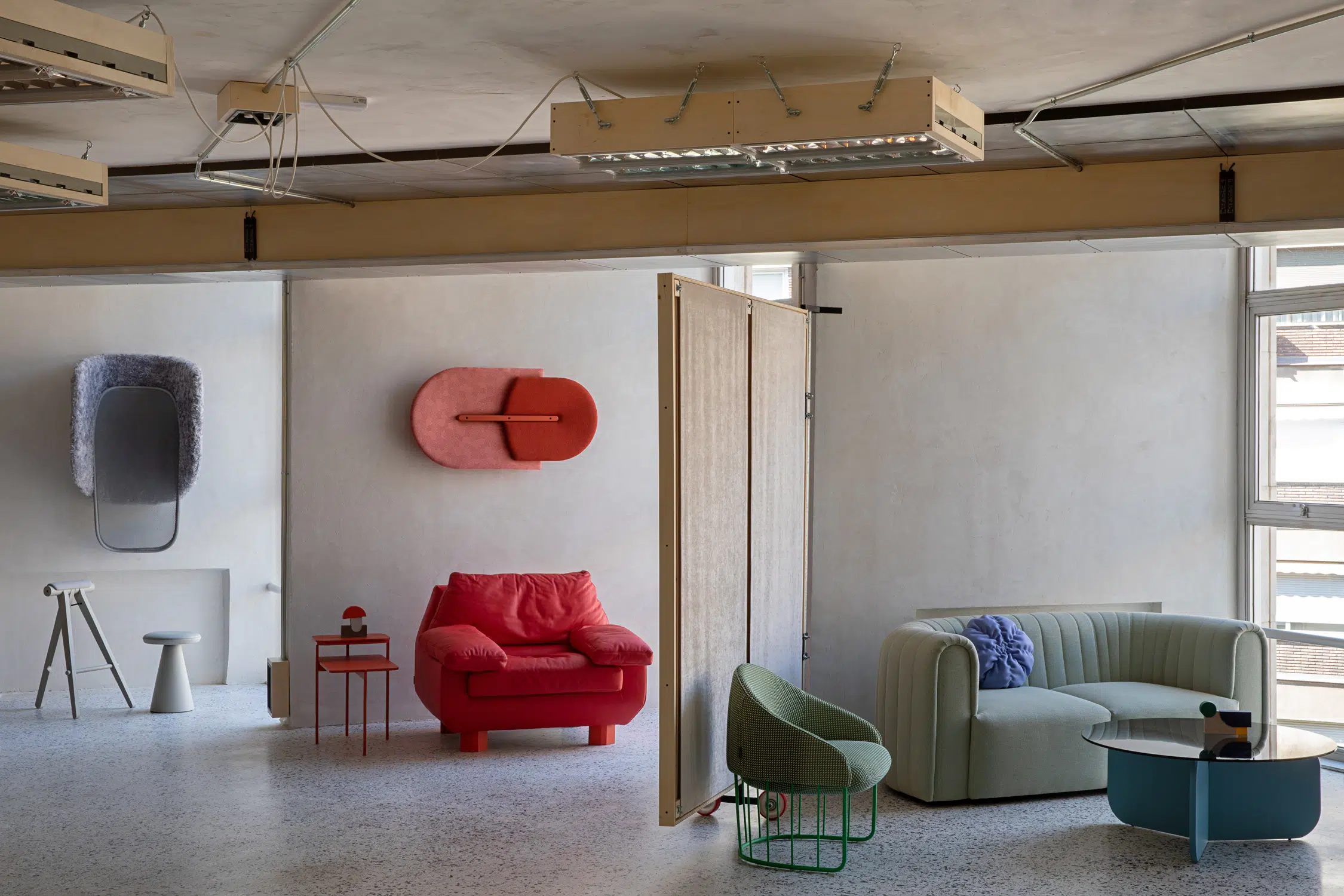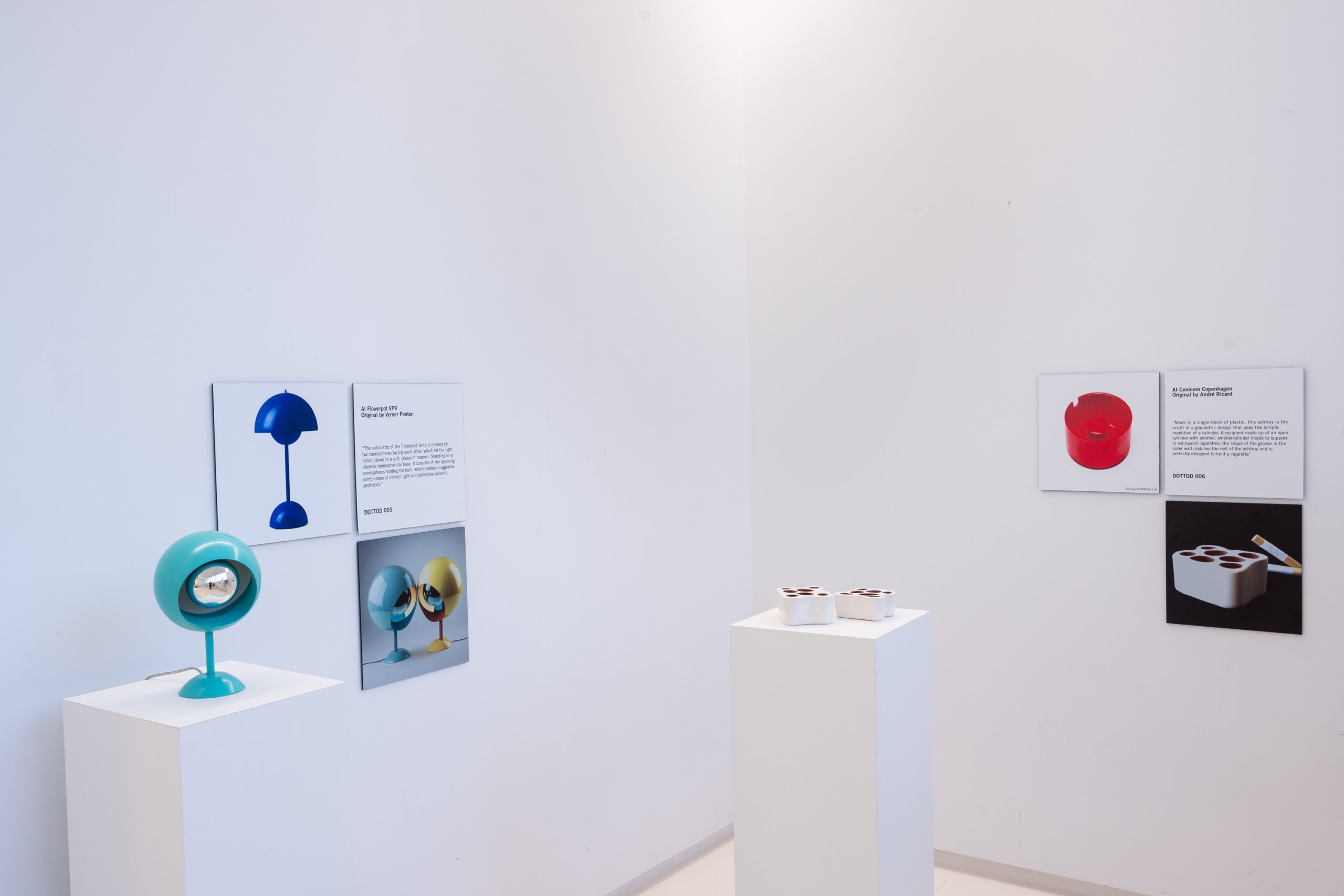Madrid, February 2025. As you step into the Madrid Design Festival, one thing becomes clear: here, design is not just about aesthetics, but a force that transforms the world. This year, the festival embraces the theme “Redesigning the World,” inviting us to rethink our relationship with spaces, materials, and even light.
La Línea Sueña: A Journey Through Light
At the Fernán Gómez Centro Cultural de la Villa, the La Línea Sueña exhibition offers a deep dive into the magic of light. Curated by Javier Riera, the exhibition takes visitors on a sensory journey through the works of Davide Groppi, Michael Anastassiades, Draga & Aurel, Álvaro Catalán de Ocón, Antoni Arola, and others.
The installations are divided into five sections, each offering a unique perspective on light: from its relationship with the landscape to sustainability, and the shadows that tell silent stories. Walking through works made from sculpted alabaster, recycled materials, and luminous sculptures, one message stands out: light is not just illumination, but a force capable of altering our perception of space and reality.
Jorge Penadés: Design as an Act of Resistance
Penadés is not a conventional designer. This becomes evident when encountering his installation Uprooted, a project curated by Seetal Solanki and visually documented by Max Creasy.
The work focuses on the environmental impact of the olive oil industry in Spain and the underutilized resource of native olive wood. The project unfolds in two main phases. The first, spanning from 2014 to 2024, investigates olive oil production systems in Andalusia, Penadés’ homeland and one of the world’s largest producers, accounting for 20-25% of global production and 80% of Spain’s. Through this research, Penadés highlights the intense industrialization of nature, focusing particularly on the shift from traditional manual olive harvesting to super-intensive methods.
Today, machinery is used to shake the trees, leading to the replacement of traditional varieties with those planted in optimized grids for more efficient harvesting. The issues arising from these techniques, which involve uprooting olive trees, are documented in a photographic reportage by Max Creasy from September 2024. An important discovery from the research is that a large amount of native olive roots, due to their natural characteristics, is discarded and not reused.
Their irregular shapes, intricate knots, and the hardness of the wood make them difficult to manage with machinery. This has sparked a broader reflection on how materials are often manipulated to conform to industrial design standards, obscuring their intrinsic qualities.
Walking around his sculptures, one feels as though the wood tells its own story: a material that is often discarded but, in the hands of Penadés, becomes art and a political message. The concept of “material agency,” which underpins his work, emerges strongly: the material is no longer just a medium but an active protagonist in the creative process. It is impossible to leave this installation without a renewed awareness of the relationship between natural resources, industrial practices, and responsible design.
In his studio, a true research laboratory, Penadés works on the “re-signification” of materials, transforming waste and unconventional materials into projects with a strong aesthetic and ethical impact. His practice spans furniture, installations, and interior architecture, challenging the traditional boundaries of design.
Álvaro Catalán de Ocón: Social Design that Lights Up the World
Winner of the 2023 National Design Award, Álvaro Catalán de Ocón brought an inspiring project to MDF25. Known for his iconic PET Lamp, created by weaving recycled plastic bottles using traditional techniques from around the world, Catalán de Ocón presents a new lighting collection that further pushes the boundaries between sustainability and design.
Looking at his lamps, one senses something deeper than a simple functional object: here, design becomes a connection between cultures, social redemption, and the transformation of waste into beauty.
Jorge Penadés and Álvaro Catalán de Ocón, with their works, demonstrate how design can be both poetic and revolutionary, blending tradition and innovation in a perfect synthesis.
COLAB: The Future of Design is Circular
In Madrid, the conversation isn’t just about objects, but also about spaces and ways of working. COLAB, the project by Sancal x Lucas Muñoz Muñoz, is a living manifesto of circularity in design.
At the top floor of the historic O’Donnell 34 building, Muñoz Muñoz transformed waste materials into furniture, lighting systems, and architectural details. Walking through the COLAB space, it’s impossible not to stop and touch the surfaces, observe the ingenious solutions, and feel the experimental energy of a place that is not just an office, nor just a showroom, but a creative laboratory in constant evolution.
The words of Esther and Elena, heads of Sancal, resonate as we explore the space: “We wanted to recover the original essence of the building but also enhance every material generated during the renovation.” Here, sustainability and creativity are not an option, but a necessity.
Icons’ Replicants: Artificial Intelligence and the Future of Design
MDF25 doesn’t just celebrate the past and present of design, but also looks ahead. DOTTOD, founded by Jana Tothill and Pietro Rustici, brings a provocative experiment to Madrid: Icons’ Replicants.
In the Fiesta Design space, the project shows the blend of artificial intelligence and design. Using AI to reinterpret great design classics, the project creates new versions of works by Enzo Mari, Frank Gehry, and Alvar Aalto, transforming them into real prototypes. The question arises: can AI be a new tool for design expression?
The experience of seeing these objects is almost surreal: on one hand, we recognize the iconic forms, on the other, we sense a subtle alteration, as if we were looking at an idea generated by an alien mind. It’s a powerful reflection on the role of the designer in the age of technology: no longer just a creator, but a mediator between artificial intelligence and tangible reality.
MDF25 is not just a festival, but an experience that changes our perception of design and the world around us. From the poetic light of La Línea Sueña to the radical nature of Uprooted, from the sustainability of COLAB to the AI visions, each installation and project is a piece of a larger conversation about the future of design.
Leaving the festival, one certainty remains: we can no longer think of design as a mere aesthetic exercise. It is a responsibility and a driver of change. And the Madrid Design Festival 2025 proves this with force.





